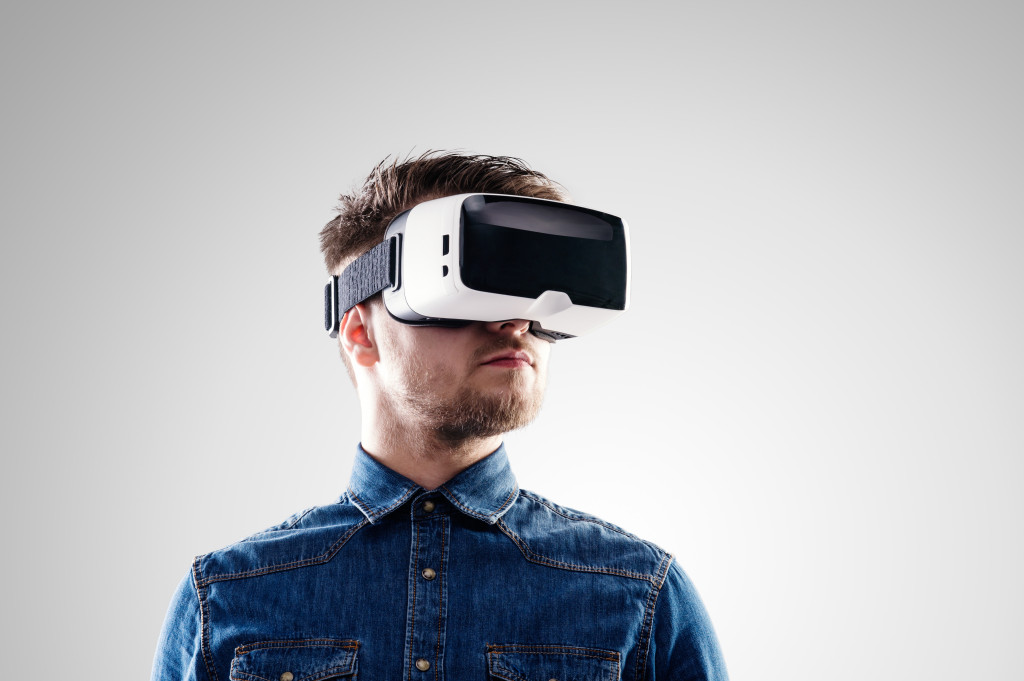Whether you’re having a Super Bowl viewing party, playing a casual match at the nearby park, or buying season tickets to see your favorite soccer team, social interaction is an essential component of the sports sector. The adrenaline rush is another major factor, where every game keeps audiences on an emotional roller coaster while waiting for the eventual winner.
Sports serve as the absolute unifier that exceeds geographic limitations and enables audiences to find alignment. Technology plays a huge role in this that has influenced athletic performance, e-sports, smart arenas, and how fans consume and engage content. From Stalker radar guns, protective equipment, and timing systems, all these had made sports less burdensome and more resilient over the years.
While virtual reality (VR) and augmented reality (AR) have been the most notable technological breakthroughs in the past year, we haven’t witnessed any habitual or widespread adoption besides in some niches. But the sports sector is one area that embraced a host of innovations, which gained positive recognition from sports fans.
The combination of virtual and augmented realities has paved the way for the emergence of the biggest sports innovation called mixed reality, where physical and digital objects interact and coexist in real-time. Today, mixed reality has created a very promising market in the sports arena. So what does this mean for athletes and their supporters?
More unique, interactive experiences
Stadiums, arenas, and sports venues have been committed to facilitating sports events that created unique and fun experiences for every sports fan. From halftime entertainment, an array of food and refreshments, audience reactions and celebrities on the big screen, all these things have become a standard business. Today, the experience is taking the next level for those who have tickets for their favorite sports events.
Golden 1 Center, also known as the most connected events arena, has digitized the sports viewing atmosphere and how the audience experiences live sports events. It has fully embraced mixed reality by allowing fans to access real-time data interactions (e.g., player facts and digital agendas) and order merchandise and refreshments right on their seats.
Gamification also takes part by incorporating AR features within the actual court, where attendees can host matches with friends and fellow audiences during half-time. These gaming elements will change the overall viewing experience by increasing the audiences’ satisfaction level. To ensure the smooth functioning of these interactive experiences, 5G connectivity should be a part of the digital infrastructure to ensure arenas can handle millions of users accessing their services.

Global fan base
Sports fanbase has become a globalized culture, where technology plays a role by keeping the sense of connection and belonging despite geographical borders.
In the past years, marketers have particularly targeted the sports community through relationship-building strategies. Instead of exclusively focusing their efforts to attract new supporters, marketers are working on establishing long-lasting relationships with die-hard fans through digital integrations.
The FIFA World Cup 2018 has demonstrated the successful integration of sports and AR to establish fan bases through digital collaboration with social media networks. From player projections, background segmentation, and selfie filters, these virtual elements have provided creative ways how fans can express their allegiance (e.g. team colors) and helped FIFA access global users on different platforms.
Meanwhile, NBA introduced a new VR feature during the 2019 playoffs for a more immersive experience for its fans. In partnership with Intel, they produced high-tech software with stats boards, playback highlights, and panoramic cameras, bringing a different level of control for live spectators.
Newer game strategies for sports professionals
Analyzing training and game footage is a traditional way of assessing player’s performance and creating new game strategies and tactics. While it has been a very useful approach, it also comes with certain limitations, since athletes cannot fully measure their athletic performance under real conditions.
Virtual reality has addressed this challenge by replicating sports competitions, allowing athletes to prepare and adjust their performance for future matches and detect potential mistakes. VR training tools have become so advanced which helped players to experience the mental and physical sensations during actual competitions.
From this idea, StriVR Labs has introduced a mixed reality feature dedicated to training athletes. This allowed athletes to mentally and physically train through a repeated and realistic view of real-time action, where they can test and analyze a variety of perspectives and also the viewpoint of their opponents.
Mixed reality has yet to reach its fullest potential. But with its increasing investments and growing market, it’s undeniable that we’ll witness a widespread transformation in the sports industry that will affect athletes, trainers, coaches, sports companies, and its supporters. The opportunities and possibilities are still being explored, but we can certainly foresee that it will change the way we consume sports.

